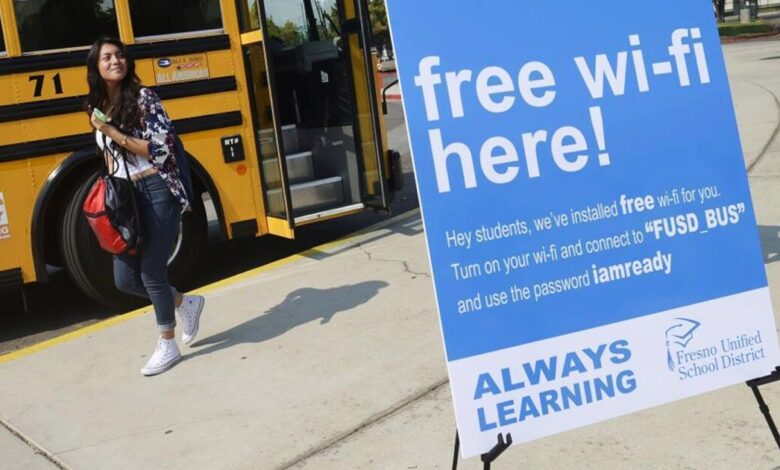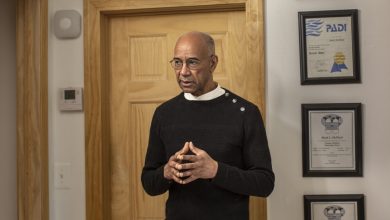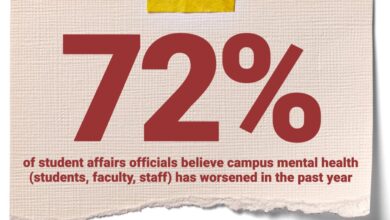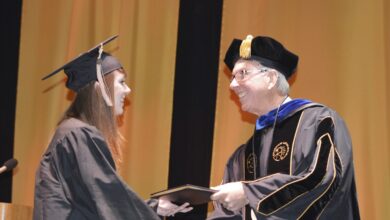One College District Brainstorms Internet-Access Solutions — With Help From the Local School System

[ad_1]
Kevin Miller remembers emptying out the computer labs when Covid hit to distribute laptops to students. The State Center Community College District, in Fresno, Calif., where Miller is the district director of enterprise technology architecture, also purchased more than a thousand hotspots, and started work on outfitting campus spaces like parking lots with Wi-Fi.
Those moves were necessary stopgaps, Miller said. But they didn’t make up for years of policy decisions, amounting to digital redlining, that have left swaths of the county’s urban and rural areas with poor internet access. While the recently passed $1–trillion federal infrastructure bill will allocate some $65 billion to improve broadband internet, the need in Fresno is more immediate — and beyond what the district can accomplish on its own.
“We can’t solve these problems as an individual institution,” Miller said. “We have to solve this together with the rest of the community.”
As colleges nationwide look to build broadband capacity for their students, State Center this fall became a founding member of the Fresno Coalition for Digital Inclusion, a cross-sector collaborative committed to expanding affordable, high-speed internet in underserved areas. And it’s begun brainstorming with another member, the elementary and secondary Fresno Unified School District, on how they might pool resources.
Fresno Unified rolled out its own private LTE network last month, after affixing makeshift cell towers — transmitters on 15-foot tripods or poles — to the tops of 15 school buildings, using $1.4 million in federal Covid-relief funding. The towers, which help transmit signals from the LTE Citizens Band Radio Spectrum to students’ hotspots, should be able to provide free service to 6,000 users concurrently, said Phil Neufeld, Fresno Unified’s executive director of information technology.
It’s unlikely that State Center, which includes four community colleges with more than 69,000 students and campuses at least 12 miles apart, would set up a separate network, Miller said. That’s because there would be too many dead zones.

Courtesy of Phil Neufeld
But what about sharing the network? State Center could, theoretically, erect its own towers, and then distribute hotspots with SIM cards that are programmed like those of Fresno Unified’s students. (The two could create a shared database of approved users as well.) That plan would allow State Center students working from home near a Fresno Unified school to join that network, and for Fresno Unified students near a State Center campus to similarly connect. Miller likened that approach to how cellphone carriers like AT&T and Verizon allow roaming across their networks.
But, Miller noted, the college district must consider technical and regulatory limitations. A key one is the Children’s Internet Protection Act, which requires internet-content filtering at elementary and secondary schools that receive federally funded discounts for internet access — a law that doesn’t apply to higher education. So one question, he said, is, “How do we figure out how to build common infrastructure when our users need slightly different things?”
There’s also the matter of financial sustainability. A tower may last for 20 years, but the equipment on the tower might have only a five-year lifespan, not including support and maintenance costs, Miller added.
Neufeld noted there’s an anticipated return on investment with Fresno Unified’s private network. Some sample math: Erecting the 15 towers, purchasing 6,000 hotspots, and then “refreshing” those hotspots a few years later would cost the district $4.75 million over a six-year period. By contrast, if the district didn’t have a private network and paid $15 a month for each of those 6,000 hotspots to connect to a commercial network like AT&T’s, the six-year cost would be about $6.5 million — $1.75 million more.
Paradigm Shift
While State Center’s conversations with Fresno Unified are still preliminary, they underscore a broader paradigm shift in education since the pandemic began: The acknowledgment that all students need access to reliable broadband to succeed, and that innovative solutions are urgently required.
Approaches have varied. At Edgecombe Community College, in North Carolina, for example, $850,000 in Covid-relief funding allowed the institution in a rural, impoverished county to upgrade its internet infrastructure so students could work outside while keeping socially distant. Eight California State University campuses this fall rolled out a long-term iPad loaner program for all transfer and first-year students. At the federal level, too, Pell Grant recipients now qualify for the Emergency Broadband Benefit Program, which offers a discount of up to $50 per month toward broadband service.
For State Center, the logic behind a more community-based approach is the pervasive need that exists countywide. Just 39 percent of Fresno County residents are using the internet at or above broadband speeds, which the Federal Communications Commission defines as 25 Mbps or higher, according to Microsoft data.
The need extends beyond education. One household, Miller and Neufeld pointed out, can include a child attending a public school, a college student pursuing a degree, someone seeking telehealth services, and another needing access to virtual court hearings.
“It’s only logical that we work closely … we don’t want to duplicate efforts or waste resources, especially in our area, because resources are so limited,” said Lydia Anderson, who teaches marketing and management courses at Fresno City College, one of State Center’s campuses. She can attest to the need among her students for more reliable internet access; many live in remote locations in the mountains, where service is poor and can easily cut out, especially with multiple users.
On top of the school and community-college districts, the Fresno Coalition for Digital Inclusion consists of representatives from the City of Fresno, Fresno Housing, Valley Children’s Hospital, and other groups, many of which meet once a month in person. Some of their top-line goals: getting broadband access to all public-housing facilities, and advocating to the state Legislature and the California Public Utilities Commission for more regulated franchise agreements with internet providers, which could prompt greater investment in disadvantaged areas. At the county and city level, too, early design and planning are reportedly underway to build out municipal fiber networks — basically, laying the physical infrastructure to “encourage commercial operators” like Comcast “to come in and do that last bit” to get service into homes, Miller said.
For Samantha Jiménez, the student-government president at Clovis Community College, another district campus, necessary change won’t just be about more technology and infrastructure. Any future tech initiatives, the 19-year-old nursing major said, need to be mindful of the language barriers English learners face (Fresno County is about 54 percent Latino), and make concerted efforts to reach and communicate with them. Speaking for her college peers especially, she said the increased reliance on online and tech since Covid struck has often been isolating.
Many non-native English speakers feel they’re “having to deal with online all by themselves,” she said. One student she spoke with recently “struggles with just ensuring that she’s able to understand” the learning-management system and materials, or where to get help.
Building robust communication and trust with community members more broadly will be key, Anderson added. It’s the same principle she brings to her classroom.
“I have a syllabus statement that says, ‘If you have technology concerns, message me, tell me what you need.’ Outright say you need reliable internet, outright say you need a device other than a mobile device,” she said. “If we’re not aware of the problem, then we can’t address it.”
[ad_2]
Source link






